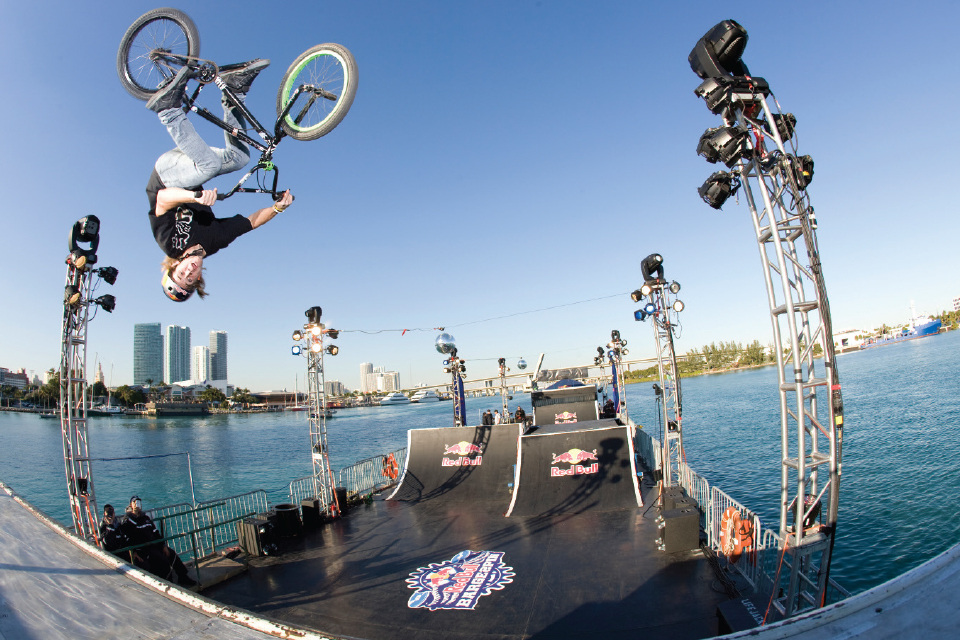X-Games Athletes—The Baddest On The Planet

In these pages, or through personal experience, you’ve discovered the training strategies of Austin’s elite runners, triathletes, Olympic swimmers, football players, and fitness models. Don’t forget the legions of boot campers, CrossFitters and AFM FITTEST competitors—if you aren’t one, you probably know one.
But how about the athletes who don’t train and compete here in Austin, instead traveling to the world’s most remote destinations for the sake of competition, whose videos go viral on YouTube every other day? These are the acrobats who will ride, twist, flip, drive, jump, and tumble to victory next month at the inaugural X Games Austin festival June 5-8.
Athletes in cutting-edge action sports like BMX Big Air, Skateboard Vert, Moto X Freestyle, and RallyCross prepare their bodies and minds for the complex challenges they face. It seems the more fresh the sport, the less likely there is an “accepted” way to train. Sure, skateboarders skate a lot, BMX riders ride a lot, and RallySport drivers, yes, drive a lot. All seem to have been born with some specialized athletic potential and an unavoidable need for speed. From there, though, there are as many ways to the podium as there are crazy-talented, super-creative, envelope-pushing guys and girls competing to get there.
Per Lundstam, the High Performance Manager at Red Bull North America, is a 16-year trainer and former sport scientist with the U.S. Ski Team. He’s been helping some of Red Bull’s most talented action sport athletes be the best that they can be since 2010. Lundstam describes his approach to X-Games training as only a scientist can.
“The Red Bull High Performance program exists to create sustained athletic success by skillfully integrating the numerous performance factors that are unique to each athlete, each sport, and the overall competitive landscape in which it takes place,” he said. (Translation: We want our athletes to dominate, repeatedly, any place, any time.)
But what does that look like from a practical standpoint? What are the nuts and bolts of the actual training methods? Two of Red Bull’s very talented BMX riders, Anthony Napolitan and Drew Bezanson, both X Games veterans, were willing to explain in their own unique ways.
Anthony, give us an idea of who you are as a rider. How many X Games have you competed in?
.jpg)
Anthony Napolitan
Can you give us some insight into how you train?
AN: To get ready for any competition, I ride a lot, try new things, groove the stuff I already know so I can apply it to new parks and ramps. I also strength train, working on power and endurance mostly, and flexibility. You’ve got to be ready to take a spill and get back on the bike. And I spend time thinking about how to be at my best mentally, both in competition and through the whole year. Red Bull has helped with all this stuff in different ways, bringing in trainers, psychologists, nutritionists. Very good team to be on, for sure.
You were the first human to land a double front flip on a bicycle at X Games 2009 in L.A. How did you prepare to pull that off on such a big stage?
AN: First human, huh? Did a monkey do it before me? Seriously, once the single front started feeling really easy…seemed like it was time to give it a shot. That is one of my favorite memories of X Games, along with my first time competing, when I took home a bronze medal in BMX Dirt. Totally stoked to podium that year.
So you guys must crash once in a while. What’s it like to train and compete after you’ve crashed?
.jpg)
Drew Bezanson
Type image description here.AN: You can push through injuries you’ve recently healed from, and other adversity, and still end up with a great ride. A lot of the mental preparation starts with how much and how well you've been riding. If I’ve been super solid, I'll have a great attitude and confidence. If I’ve had a bunch of recent wrecks, I’m not so confident. But you can have a bad day or week and still pull off a great ride, and it’s a great surprise and really satisfying when that happens.
DB: I agree. I took almost a year off in 2012 after a bad head injury the year before. I worked on getting stronger, eating better, doing what I could while I was taking it easy on the bike. Once my doctor gave me the green light, I worked my way up carefully to doing things that were even tougher and crazier than before.
Drew, those Joyride 150 videos that you keep coming up with are pretty amazing. What possessed you to try some of the stuff I saw you do there?
DB: That’s my home park, and they give me a lot of creative freedom, so I build stuff I’d like to ride up, bounce back off of, or, as you saw, even fly over sometimes [big grin]. And Justin [Kosman, video editor] is a wizard.






